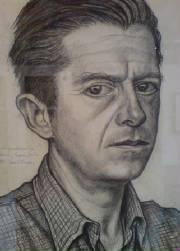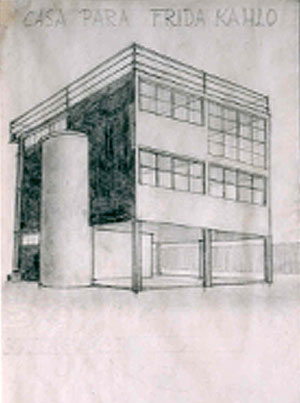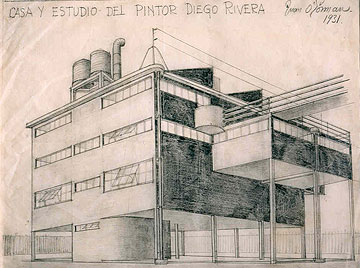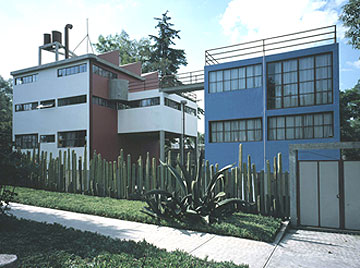|
Frida Kahlo and Diego Rivera Museo Casa Azul |
|
|
Juan O'Gorman- Architect behind the Casa- Estudio |
|
|
|
Juan O'Gorman (July 6, 1905- January 17 1982) was a Mexican artist, both painter and architect. Further on from his architecture, his paintings often covered many subjects though out Mexican
history, such as landscape, and legends. He also painted the murals in the Independence Room in Mexico City's Chapultepec
Castle and the big murals of the Central Library of the National Autonomous University of Mexico. In a sad ending he died on January 17, 1982, as a result of suicide. Authorities believe the artist
grew despondent after being diagnosed with a heart ailment which curtailed his work. Mr. O'gorman, who was 76 years old, was
found dead at his home. However it was to be the house he built for Diego River and Frida Kahlo in 1931-1932 that was to gain O'Gorman national recognition
and remains one of his most famous and important creations. His relationship with Rivera grew once the house
was built and they remained close friends, and in turn, evident in his work, Rivera influenced O'gormans paintings.
|
|
Moving on through the 19th century, architects such
as Henri Labrouste and Auguste Perret incorporated the characteristics of structural rationalism throughout the 19th
century in their buildings and by the early 20th century, architects such as Hendrick Petrus Berlage, and Juan O'Gorman were
exploring the idea that structure itself could create space without the need for decoration. This gave rise to another 'ism,'
that of modernism, which further explored this concept. A fantastic comprehensive article on the history of
Architectural Rationalism can be found if you click on this link www.itaucultural.org So we can see how the ideas of 'Functionalism and Rationalism'
go hand in hand, due to the ideas of science and a space being created with the purpose or function in mind. When u enter
the ground of the museum or simply look at it from the outside, these theories are apparent.
|
|




